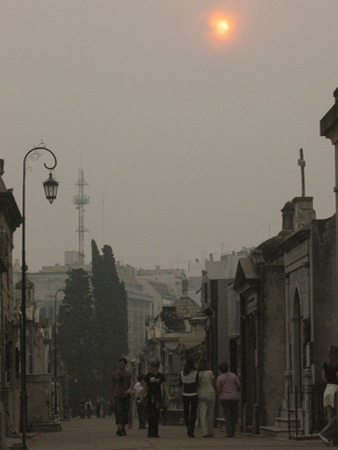
Thanks to two weeks of brush fires north of Buenos Aires, the city is now covered with a thick layer of smoke. The cemetery makes a perfect foreground for yesterday’s apocalyptic sun.
Leave a Comment
Thanks to two weeks of brush fires north of Buenos Aires, the city is now covered with a thick layer of smoke. The cemetery makes a perfect foreground for yesterday’s apocalyptic sun.
Leave a Comment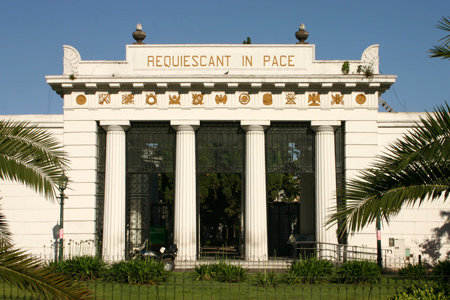
When founded in 1822, the cemetery grounds were humbler than the miniature city of mausoleums which can be visited today. The main entrance was nothing more than a wrought-iron gate without much decoration, & the area was enclosed by an adobe-cement wall. Buenos Aires mayor Torcuato de Alvear sponsored large urban makeovers of the city & Recoleta Cemetery was on his list. In 1881, plots randomly located among dirt paths gave way to orderly sectors & paved walkways.
Juan Buschiazzo designed an appropriately elegant main entrance. He was the obvious architect of choice for Alvear, responsible for some of the poshest mansions in town. Buschiazzo incorporated the original structure into the new gate, adding columns & a frieze filled with symbols related to Christianity & naturally, death. Click on the links below to discover the meaning of each symbol:
“Rest in peace” in Latin tops the gate, leaving little doubt as to what’s inside. The above symbols are also repeated on the interior façade of the gate along with a small bell & the phrase “Expecatamus Dominum.” Taken from Philippians 3:20, it can be roughly translated as “We await the Lord.”
The gate was listed as a National Historic Monument in October 2007.
Leave a Comment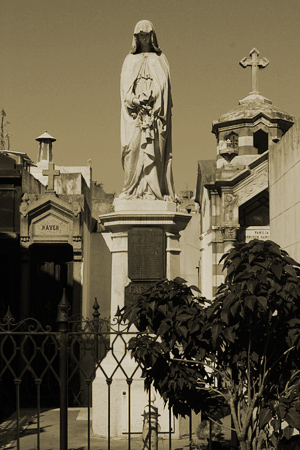
Born in La Rioja, Quiroga received the nickname “Tiger of the Plains” based on his adeptness in battle. It was a skill needed during the troubled times of early independence from Spain when Argentina struggled to reach a consensus on national government.
When Argentina broke away from Spain & earned its independence in 1816, some people wanted to invite a European monarch to establish their own kingdom… sort of an Empire of the Río de la Plata. The idea isn’t far-fetched since Brazil was a separate Portuguese empire at the same time. But those in favor of a monarch didn’t have the majority.
The biggest issue centered on the role of Buenos Aires in the new nation, specifically the money it received from port taxes. Unitarios wanted Buenos Aires to become the capital city & keep all revenue from international trade. Opposing federales wanted a confederation—an alliance among equals—which would commit Buenos Aires to give other provinces access to their income. Definitely a touchy issue.
As the major port of the nation, foreign trade brought lots of money into Buenos Aires & exporters wanted to maintain the status quo. By placing the national capital in the same spot as the economic center, Federalists feared that the rest of Argentina would be neglected. In the end, the struggle over Confederation vs. Republic was settled in favor of Buenos Aires. Unitarian predictions came true as national growth has been skewed toward the capital ever since.
A strong supporter of BsAs, Quiroga thought that Rosas could resolve the conflict & pledged his support. But when Rosas began ruling Argentina like a monarch, Quiroga switched sides. Ignoring warnings of a conspiracy against his life, Quiroga was ambushed & killed in central Argentina. Eventually his remains were transferred to Recoleta Cemetery.
His place in history was guaranteed when future President Domingo Sarmiento wrote a harsh biography of Quiroga… still required reading in the Argentine curriculum. For Sarmiento, Quiroga embodied the stereotype of the gaucho: unable to think off his horse, wild, savage, & the opposite of progress. Not the most accurate of depictions, this image of Quiroga served to promote urban development at a time when Argentina needed guidance:
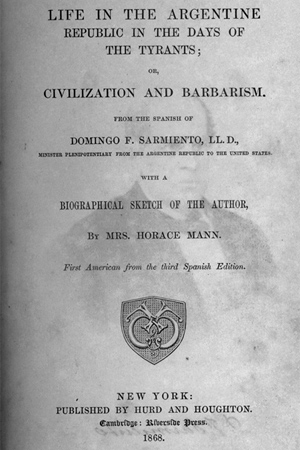
Quiroga’s story is interesting but so is his tomb. Although weathered over time, the statue of Mary is a beautiful work of art made of Italian artist Antonio Tantardini. Note the delicate lacework details on her shawl. And yes, you’re seeing double. A miniature copy of this statue crowns the dome of another tomb nearby:
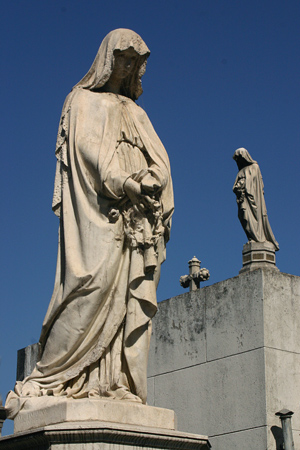
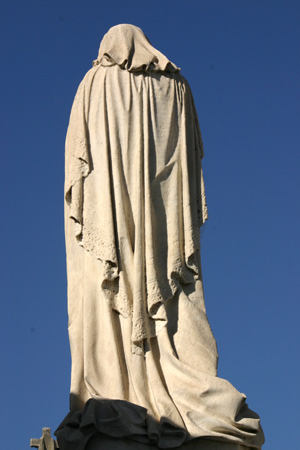
Legend claimed that the coffin of Quiroga was buried upright, perhaps so he would be one of the first out during the Second Coming of Christ. Excavations in 2004 confirmed his fate… Quiroga was indeed buried upright, hidden behind a wall underground. He was controversial enough that family & friends were afraid someone might break into the cemetery to deface his remains. Sure, it’s gruesome, but that’s one way to have the last word… when your opponent can’t fight back.
3 Comments